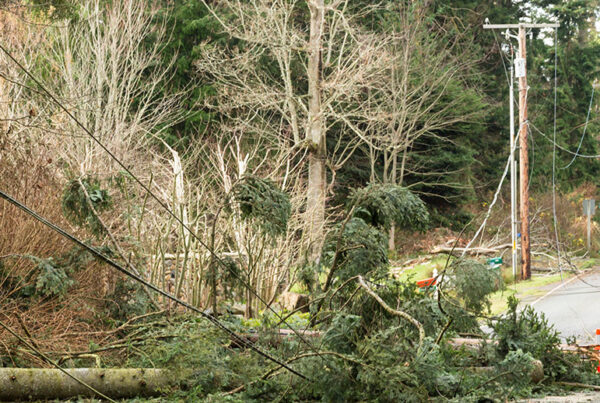
The electric grid as we know it is changing. The generating resource mix is shifting with the retirement of natural gas, coal and nuclear plants combined with the introduction of renewable energy resources, such as wind and solar photovoltaic power plants. With these changes come changes in the technology deployed on the bulk power system. Modern renewable energy resources are interfaced to the grid through inverter technology, consisting of power electronics that drive the electrical control and performance of these resources. The increasing penetration of inverter-based resources drives the need for coordination, communication and collaboration across the industry to ensure reliability moving forward. As the Electric Reliability Organization for North America, NERC is using a multi-pronged approach to improve the reliability and performance of inverter-based resources connected to the bulk power system.
As part of its mission, NERC analyzes historical trends in grid performance and performs independent forward-looking reliability assessments. Through engagement with industry stakeholders, grid disturbance analyses and its assessments, NERC puts a spotlight on potential emerging reliability issues. The aim is to work collaboratively with industry to address these potential issues before they manifest into actual large-scale outages.
As part of this work, NERC recently identified a significant need for industry focus on the performance and reliability of inverters and inverter-based resources connected to the bulk power system. Recent grid disturbance events have led to the development of key findings, risk-informed recommendations and NERC alerts to recommend mitigating actions for potential reliability issues.
In August 2016, the Blue Cut Fire tore through the San Bernardino and San Gabriel mountains in Southern California. The fire quickly spread toward a crucial transmission corridor, ultimately resulting in 13 500-kV line faults and two 287-kV faults. One of those faults resulted in the reduction in bulk power system-connected solar photovoltaic output of approximately 1,200 MW over a widespread area. The loss of a widespread loss of inverter-based resources due to a normally cleared fault brought inverter-based resource controls, protection and performance to the forefront of NERC’s reliability efforts. These issues had not previously been identified and were not getting the necessary attention.
NERC, in coordination with the Western Electricity Coordinating Council, affected generator owners and operators, inverter manufacturers, and industry experts, conducted an event analysis that led to the publication of the Blue Cut Fire Disturbance Report. This report identified that a large amount of solar photovoltaic resources erroneously tripped on instantaneously calculated frequency measurements. In addition, many inverters also used an operating mode called “momentary cessation,” where they completely ceased injection of current to the grid when terminal voltage falls outside an acceptable operating range. A Level 2 NERC alert, Industry Recommendation: Loss of Solar Resources during Transmission Disturbances due to Inverter Settings, was released shortly thereafter to gather data on the extent of the condition and to seek mitigating actions for the frequency-related tripping and long recovery in current injection following momentary cessation. Data collected in response to the NERC alert showed that almost 80 percent of the bulk power system-connected solar photovoltaic fleet used momentary cessation and that about 35 percent of the fleet had a susceptibility to erroneous frequency tripping. The affected inverter manufacturers were very proactive in working with generator owners to mitigate the frequency tripping issue and have modified control settings for their bulk power system-connected fleet to mitigate this issue.
The task force recently completed the initial draft of the Reliability Guideline: Bulk Power System-Connected Inverter-Based Resource Performance, which is currently posted for industry comment through June 29. This guideline is intended to serve as a cornerstone document for the expected performance of inverter-based resources connected to the bulk power system and is expected to be published by October 2018. The guideline specifies recommended steady-state and dynamic performance characteristics for inverter-based resources and covers a wide range of related aspects from protective functions to monitoring capability. In addition, the task force is leading interconnection-wide reliability studies to ensure reliability of the Western Interconnection due to the high penetration of solar photovoltaic resources in certain parts of the grid.
Another widespread loss of solar photovoltaic resources occurred during the Canyon 2 Fire on October 9, 2017, which led to another event analysis report — the Canyon 2 Fire Disturbance Report. This report identified a number of causes for inverter tripping. NERC issued another Level 2 NERC alert, Industry Recommendation: Loss of Solar Resources during Transmission Disturbances due to Inverter Settings – II. The focus was again on gathering necessary data to understand the extent of the conditions and to seek mitigating actions. The recommendations are intended to apply to all solar photovoltaic resources connected to the bulk power system, not only those resources that are under NERC jurisdiction.
The growing prevalence of inverter-based resources presents many new opportunities as well as potential challenges to those entities responsible for planning and operating the bulk power system. NERC, in collaboration with industry stakeholders, has taken the initial steps to understand the changing resource mix, assure reliability of the bulk power system in an evolving landscape and bring attention to new technology perspectives. We must all work together to adapt to these changes and proactively address potential emerging reliability risks to ensure a safe, reliable, secure and robust grid.
















